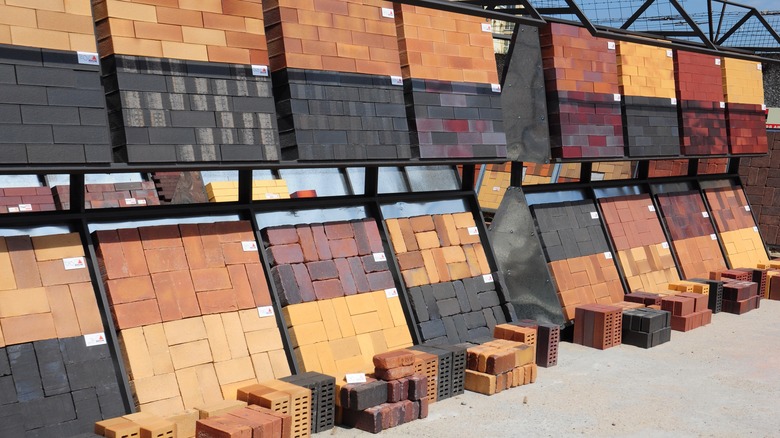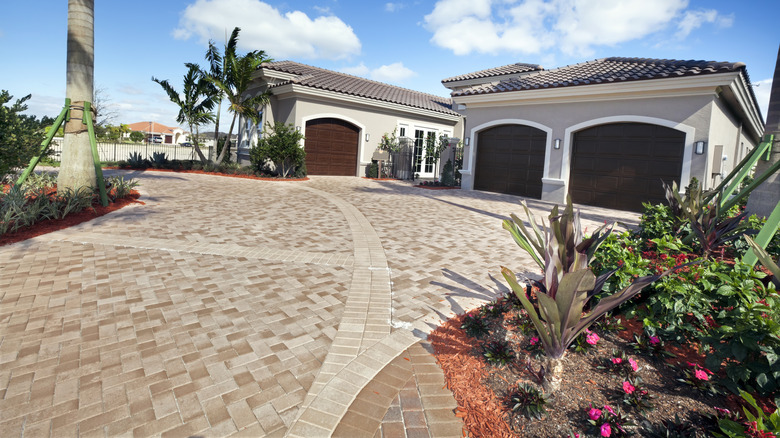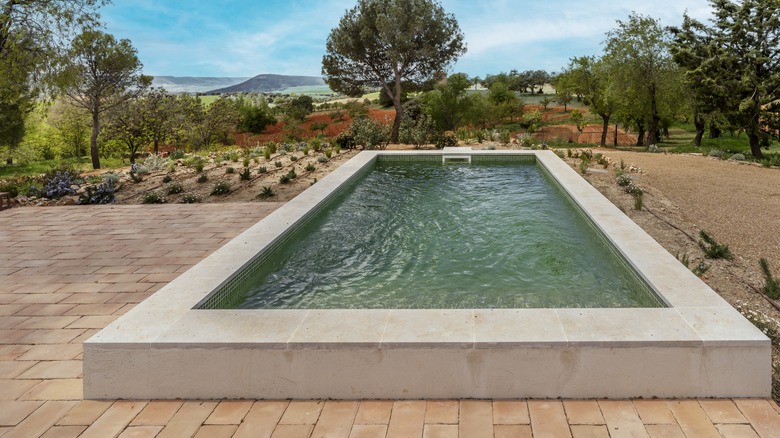Pick The Perfect Paver Color For Your Home Project With These Tips
New paving can literally pave the way to a new look for your home. Yes, your property will ultimately look neater. And, you can't underestimate how much curb appeal you can create on your street with, for example, a redone front walkway. But new paving can also change the whole feel of a home's exterior, especially when you use the best paver stones for your driveway or choose the right type of pavers to create the patio of your dreams.
One of the most important decisions you'll make is picking the paver color. It may be easy to see homes in your neighborhood and think there are only two options: gray or more gray. But akin to so many home improvement upgrades for a property these days, pavers come in an almost unlimited variety of hues — and some are even variations on the most basic colors. There are multiple shades of gray, in both cool and warm tones, for instance. And, there's a whole other part of the paving color wheel to consider, including variations of blue, red, brown, and yellow.
Start by eyeing the home's exterior
First consider the color of your home. Some prefer a uniform look. For a gray home, you might want to choose gray pavers. The problem is that the combination may look too monotone. With the right tone of gray, however, it can work. While homeowners have a tendency to want to match everything, even a picture frame to their floor tile, be open to going for contrast. A home that's red, for instance, could do with the contrast that a gray garden path can bring. Within these color choices, consider tone. Brown, beige, yellow, red, and orange are warm tones; gray, purple, blue, and black are cool tones. Ask your installer for a visual guide, or use Canva's color pairing guide, to help you tease out possible color combinations.
There are projects where going for one color can benefit a property. This is particularly true for building a patio. Such a strong color presence can help define a space. In this case, masonry designers recommend using pavers in other colors for contrasting accents such as borders and inlay and then weaving that color into other places in the backyard through planters, pillars, and garden walls. In all cases, it's a good idea to take home showroom samples of paver stones you're seriously considering. Place them outside and see how they look under different light throughout the day.
Other factors that you may not have considered
There are more details to keep in mind when choosing a paving color, and they might surprise you. Dark colors work best with driveways and other high-traffic areas to camouflage stains and spills, especially from underneath a parked vehicle. Lighter colors are a good choice for areas where people might walk barefoot, such as a deck or around a pool, because these hues absorb less heat from the sunlight. If your landscaping is quite green, consider tan or gray pavers so the space doesn't look too busy. If there are flowers, brightly colored pavers provide a complementary pop of color.
Some suggest being inspired by the roof's color to pick the paver color. In Los Angeles, one well-loved choice is pairing orange paving stones with red-roofed homes. On the other hand, you might even like the look of using two different color stones, or three, no matter the color of the house. Keep in mind that pavers in light colors can give a space an expansive feel, and pavers in vibrant colors can help to define a space. Harsh sunlight can wear down certain colors over time, so inquire about sealing the pavers. If you're on a budget, you can seal the pavers yourself with the right materials, but be aware that there are common mistakes to avoid when laying pavers in your outdoor space, including covering utility lines and forgetting to lay down landscaping fabric over excavated surfaces.


